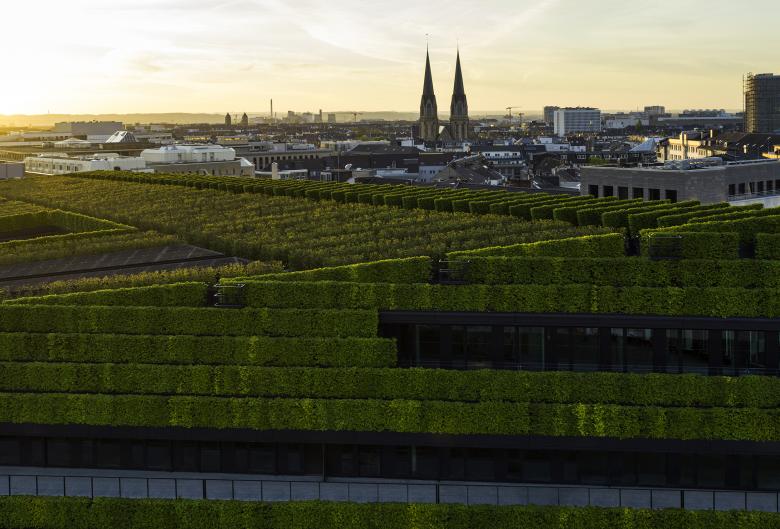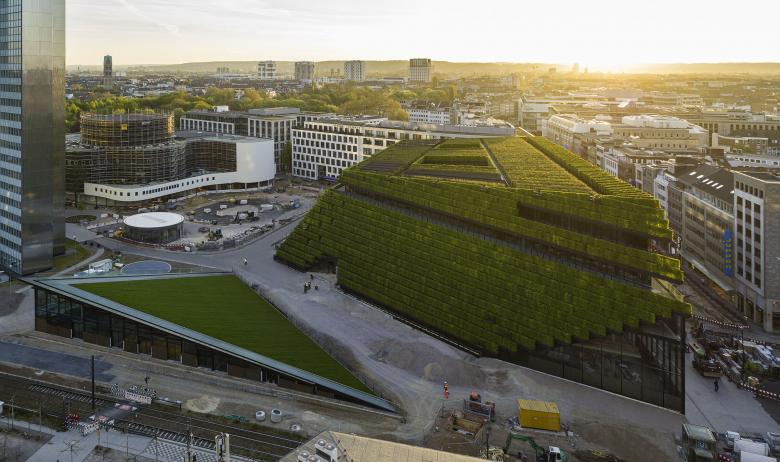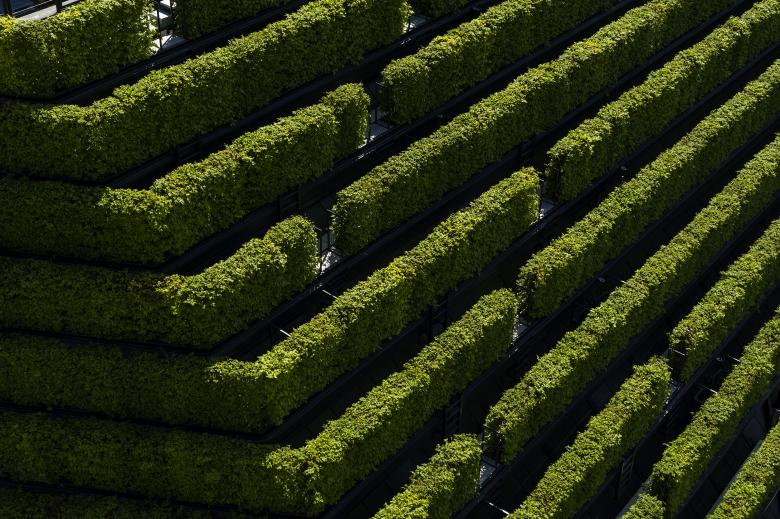Greening Düsseldorf
John Hill
27. Mai 2020
Photo: HG Esch
Europe's largest green facade — 8 kilometers of hornbeam hedges, more than 30,000 plants — was recently completed in Düsseldorf's city center. Kö-Bogen II was deigned by ingenhoven architects, who assert the hedges are the ecological equivalent of 80 fully grown deciduous trees.
Ingenhoven architects worked with Werner Sobek from Stuttgart and Prof. Dr. K.-H. Strauch from Beuth University of Applied Sciences, Berlin, on the planted facades and roof. Hornbeams were selected because the native hardwood species keeps its leaves year-round, changing its colors depending on the season.
Photo: HG Esch
The architects label the project "an urban response to climate change," not only for the ecological benefits of the plants, but for the replacement of a section of elevated roadway with a building covered with greenery. It is an important project for the architects, who write in their project description that "Christoph Ingenhoven has been pursuing the idea of redesigning the centre of Düsseldorf since 1992."
Photo: HG Esch
The building is located immediately east of the first Kö-Bogen (designed by Daniel Libeskind and completed in 2013) and just south of the city's Hofgarten. In this location Kö-Bogen II strives to extend the park into the city, but the coverage of five miles of hedges across its sloped surfaces make the building look like a massive piece of of Land Art. This is fitting, as the half-century-old movement was an inspiration for ingenhoven architects in their latest contribution to greening cities around the world.
Photo: HG Esch
Verwandte Artikel
-
Greening Düsseldorf
27.05.20



